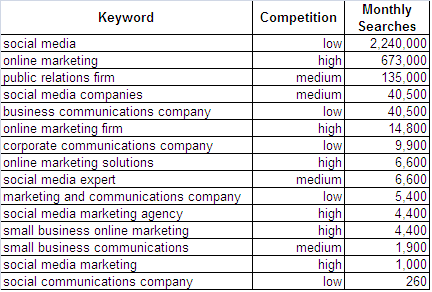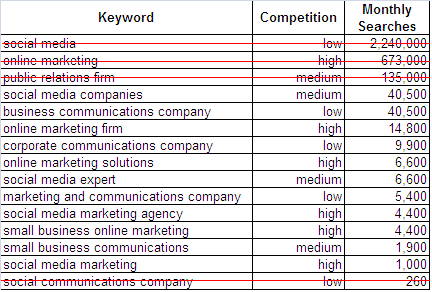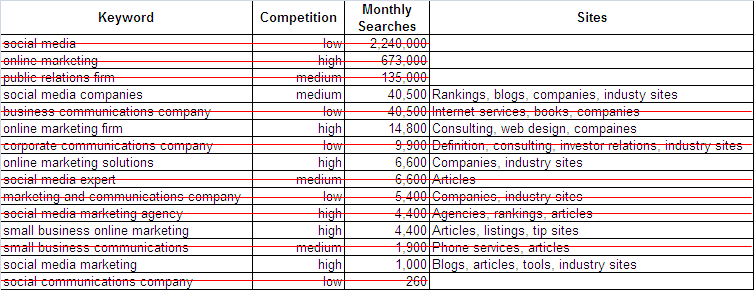 Today’s guest post is written by Molli Megasko.
Today’s guest post is written by Molli Megasko.
For those of you who write content for Yahoo! you’ve probably received the new “Yahoo! Style Guide: The Ultimate Sourcebook for Writing, Editing, and Creating Content for the Digital World.”
If you don’t, then this is a great beginners’ guide for writing online (blogs, websites, enewsletters, keywords, SEO, etc.).
The book covers writing for an online audience, user-interface, managing mechanics, resources, and so on.
After skimming through the contents for the 512 page book there was one section that caught my eye in particular: Charting Keywords with a Keywords Research Tool.
I’m not going to describe SEO to you, as we’ve had many posts on how to do tagging and categories and use your keywords. I want to discuss one of the exercises the book points out: How to define the correct keywords to use.
Create Your Keywords Foundation
Right now, think of three keywords or phrases you would like people to use to get to your site. For the purpose of this exercise I’ll use Arment Dietrich as an example:
- Online marketing
- Social media
- Public relations firm
Now comes the fun part. Let’s see what the competition (the number of advertisers bidding on each keyword relative to all keywords across Google) looks like for these keywords and how many people search for them each month. Let’s also break these down a bit more and develop targeted keyword phrases.
Expand Your Keywords List
By using Google AdWords: Keyword Tool, we can easily do all three. I started a nice little chart below to track the numbers. As you input the data, add some of the suggested key phrases that you think fit for your company. (There are some pretty cool resources and tools that give more detail, but Google AdWords gives you enough for free.)

Keyword Research
Next, delete any one word phrase and any you would feel weird repeating more than five times on one page. I also deleted one that was a shorter version of another. Now let’s sort by search volume and delete any outliers if you have them, especially those with high volume and high competition. This should narrow your list down.

Narrow Down Your Keywords
Now you have a good handful of keywords. Type each phrase into Google and see what sort of sites pop up on the first page. Of those, let’s delete any that are off our relevancy, and those that are too hard or unrealistic with which to compete.

Define Your Keywords
The last portion is to focus on the rankings. If you type each of the remaining phrases into Google, when does your site come up? Link 20, link 60, too far to know? Once you figure that out, the book tells us to focus on the phrases that are higher than a ranking of 50. Those will be easier to pursue and see movement.
You may notice these phrases are more specific, which is why there is less competition, but they deliver more targeted leads.
Use these words in your website copy, in the headlines and in the subheads.
Use them as tags.
Make your URLs represent the phrases. Add them to your blog posts and newsletters.
As Gini Dietrich says, content is king. Now we know what keywords we should use in all new content that we create and put online.
In a few months time, you should do your ranking exercise and see if there has been any movement regarding your listings. Then we can pick and choose new keywords to focus on since, as we all know, SEO is a never ending process.
Have you tried this for your business? Tell us what you’ve learned.